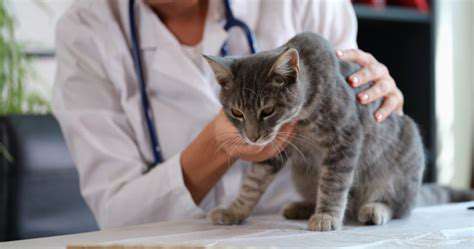Understanding Kitten Meowing: What It Means
Seeking Attention and Comfort: Social Meows
Understanding the Different Types of Kitten Meows
Kitten meows aren't all the same. A high-pitched, insistent meow might signal hunger or a need for attention, while a softer, more drawn-out meow could indicate discomfort or a desire for closeness. Observing the context, such as the kitten's body language, environment, and recent activities, is crucial to understanding the specific meaning behind each meow. A kitten meowing while its litter box is full, for instance, likely indicates discomfort and the need for a change in location. Recognizing these nuances is key to properly responding to your kitten's needs.
Different meows can also reflect different emotional states. A kitten might meow plaintively when feeling lonely or scared, or more urgently when it's in pain. Pay close attention to the tone and volume of the meow, as these elements can provide valuable clues about the kitten's emotional state. A series of short, sharp meows might indicate excitement or playfulness, whereas a longer, more sustained meow might express a deeper need for comfort or reassurance.
The Role of Attention-Seeking Meows
Kittens, like many young animals, are masters of communication, and meowing is often their primary way of interacting with their environment and seeking attention from their caregivers. This attention-seeking behavior is a natural part of their development, as they learn to interact with their surroundings and understand the responses they receive. It's a crucial way for them to learn about their environment and how to navigate it, and it's important to respond appropriately.
Recognizing the importance of attention-seeking meows is essential for establishing a strong bond with your kitten. Responding to these meows with positive interactions, like petting or playing, reinforces the desired behavior and helps your kitten feel secure and loved. Conversely, ignoring attention-seeking meows may inadvertently encourage the kitten to use louder or more persistent meows to get your attention. Consistent positive reinforcement is key to shaping your kitten's behavior.
Comfort Meows: Identifying Signs of Discomfort
Beyond seeking attention, kittens also meow to express discomfort. A kitten experiencing discomfort might exhibit a variety of physical and vocal cues, including a change in their usual activity levels, alterations in their eating habits, and, of course, meowing. Understanding these signals is vital for providing appropriate care and ensuring your kitten's well-being. A kitten that is consistently meowing, especially with a change in tone, might be exhibiting pain or discomfort. This could be related to a variety of factors, from a simple upset stomach to something more serious.
Environmental Factors Impacting Kitten Meowing
The environment plays a significant role in a kitten's vocalizations. A kitten feeling lonely or isolated might meow more frequently to express its need for companionship. Similarly, a kitten in a stressful or unfamiliar environment might meow to express its anxiety or fear. Environmental factors, such as the presence of other pets, the structure of the home, or even the time of day, can all influence a kitten's meowing behavior. Understanding these environmental factors can help you decipher the meaning behind your kitten's meows and provide appropriate support. For example, a kitten meowing excessively at night might be simply missing its mother or littermates.
The Importance of Observation and Patience
Ultimately, understanding your kitten's meows requires patience and careful observation. Pay attention to the context surrounding each meow, including the kitten's body language, environment, and recent activities. It's essential to build a strong bond with your kitten by consistently responding to its needs, whether it's seeking comfort, attention, or simply expressing its emotions. Remember that every kitten is unique, and their meowing patterns may vary. By carefully observing and understanding these patterns, you can better respond to your kitten's needs and ensure its well-being.

Read more about Understanding Kitten Meowing: What It Means
Hot Recommendations
- Top Cat Trees Your Cat Needs
- Top Brands for Biodegradable Pet Waste Bags
- Best Ways to Support Animal Rescues Without Adopting
- Best Training Methods for Service Dogs (Specific Tasks)
- The Challenges and Joys of Living with a Senior Dog
- Heartwarming Stories of Therapy Animals
- Best Dog Beds for Comfort and Durability
- Best Ways to Correct Leash Reactivity in Dogs
- Guide to Adopting a Pet After Losing a Pet
- A Touching Story About a Cat Who Saved My Life









